Bucharest is the capital city of Romania and was founded in 1459 by prince Vlad Țepeș (Vlad the Impaler, of Dracula fame), a savvy politician and fierce warrior. The name of the city is thought to be derived from the shepherd Bucur, which in Romanian means joy. With a population of around 1.9 million, Bucharest is the largest city in the country and it lies in its' south-east region on the Dâmbovița River, which runs underneath Unirii Square, the most important square in the centre. From this square, the most important boulevards of Bucharest run, the most notable being Unirii Boulevard, that connects the Parliamentary Palace from the west of it with Alba lulia Square to the east. The Parliamentary Palace is the second largest official building in the world, after the Pentagon and I have written more about it on a separate web page here. Unirii Square is elaborately decorated with mosaic fountains and forms the city's (and the nation's) business hub. It also includes the Patriarch's Hill, with the Basilica and the 17th century Patriarchal Palace.
Please note: Apologies for the poor photo quality (taken latter half of 1990's). I have some newer ones from another visit hiding somewhere on a hard drive, so may replace those below sometime in the future.
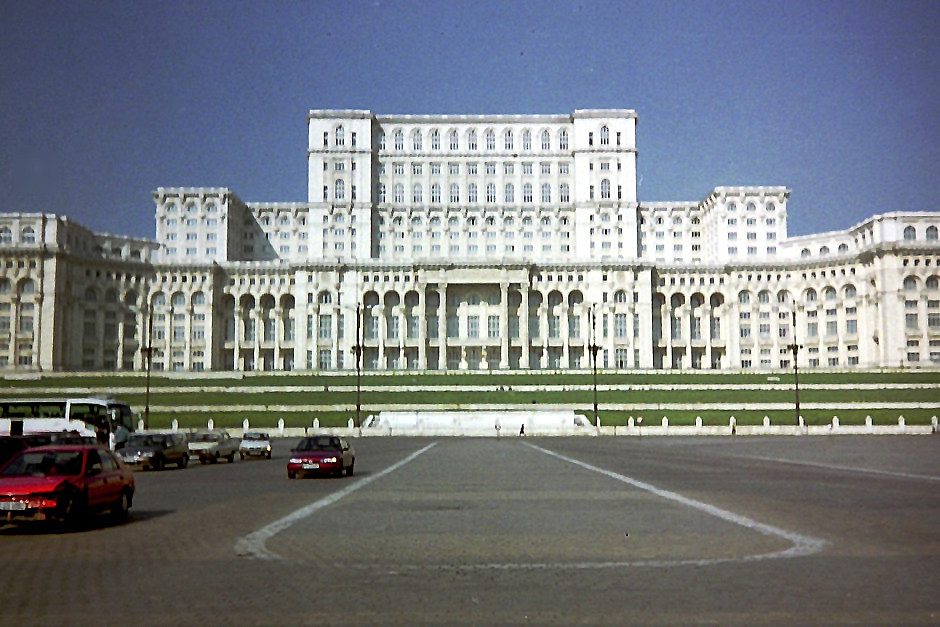
Above: Palace of Parliament

Above: View from Unirii Square towards the Palace of Parliament

To the first time visitor, this part of the city may come as a surprise due to the size and planned uniform architectural styles of the buildings lining the spectacular wide boulevards. Construction of the buildings here took place after the 1977 earthquake and also as a result of razing large parts of the historic part of the city under Nicolae Ceaușescu's leadership (1965–89); His megalomaniac plans formed an ambitious "Socialist realism" style redevelopment of the city, a project which was still work in progress at the time of his downfall during the Romanian Revolution of December 1989. The reconstruction of Bucharest did involve the moving of some churches, but involved altering the street layout and was so radical that the city was transformed and no longer what it used to be, previously dubbed the "Little Paris". The city is home to a large number of parks, many of which include lakes, such as Cișmigiu Park and the giant Herăstrău Park in the northern part of the city; the latter houses an outdoor ethnographical museum (see text further down this page). Bucharest is a city for those interested in the arts; it is home to the Romanian National Opera, as well as the I.L. Caragiale National Theatre. The Romanian Athenaeum (Ateneul Român) is the city's main concert hall and was built in the neoclassical style between 1866 and 1888 on a design of the French architect A. Galleron. It's interior contains a circular mural painting depicting the most important events of Romania throughout different periods. On Victoria Square sits the Grigore Antipa National Museum of Natural History, which contains a rich collection of flora and fauna from all over the world. Grigore Antipa (1867-1944) was a Romanian Darwinist biologist who studied the fauna of the Danube Delta and the Black Sea. He administered the museum for 51 years. Bucharest is, to some, also sometimes dubbed "Las Bucharest", due to its wide choice of casinos, restaurants, nightclubs and hotels.

Arcul de Triumf (The Triumphal Arch)
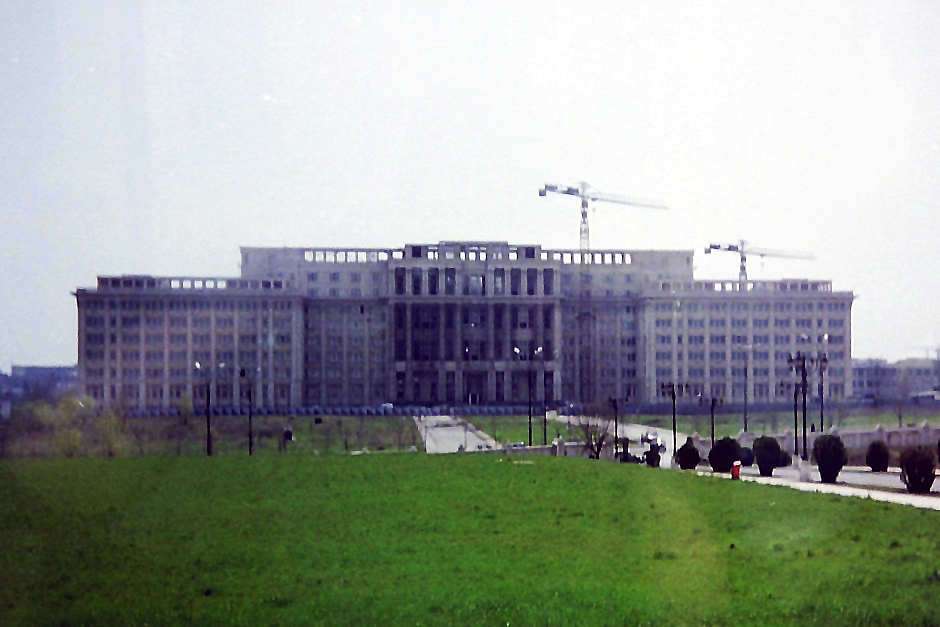
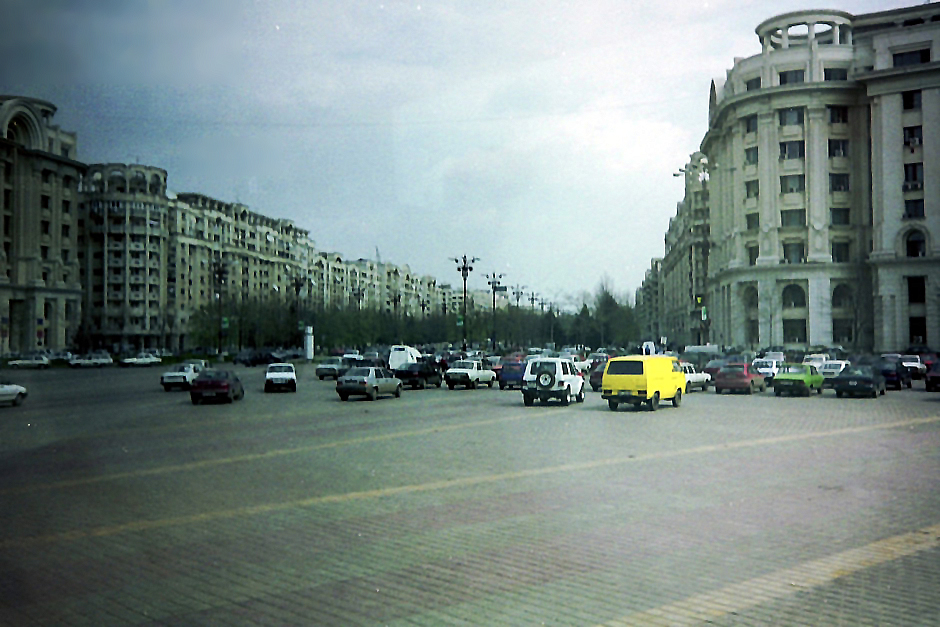
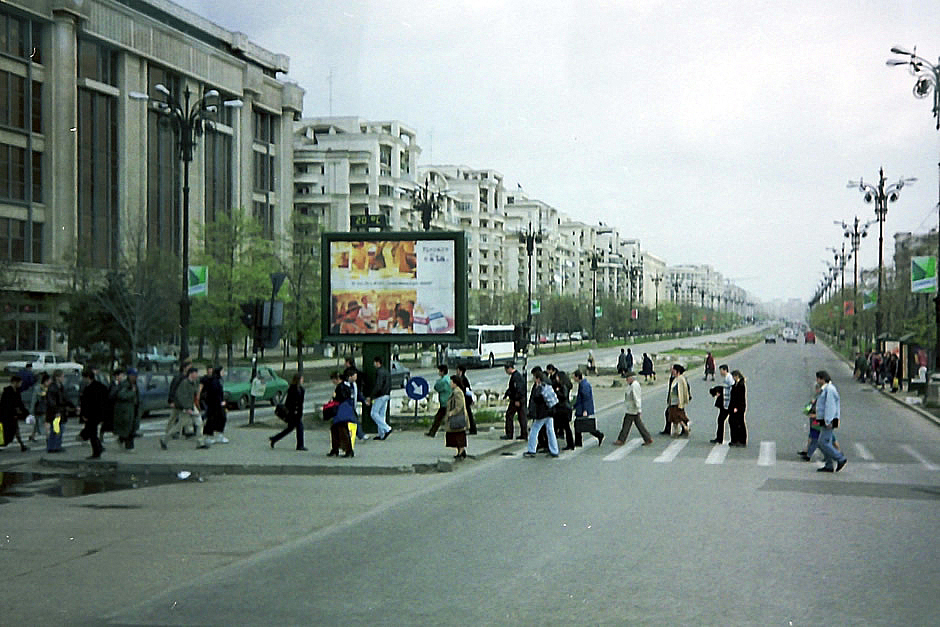
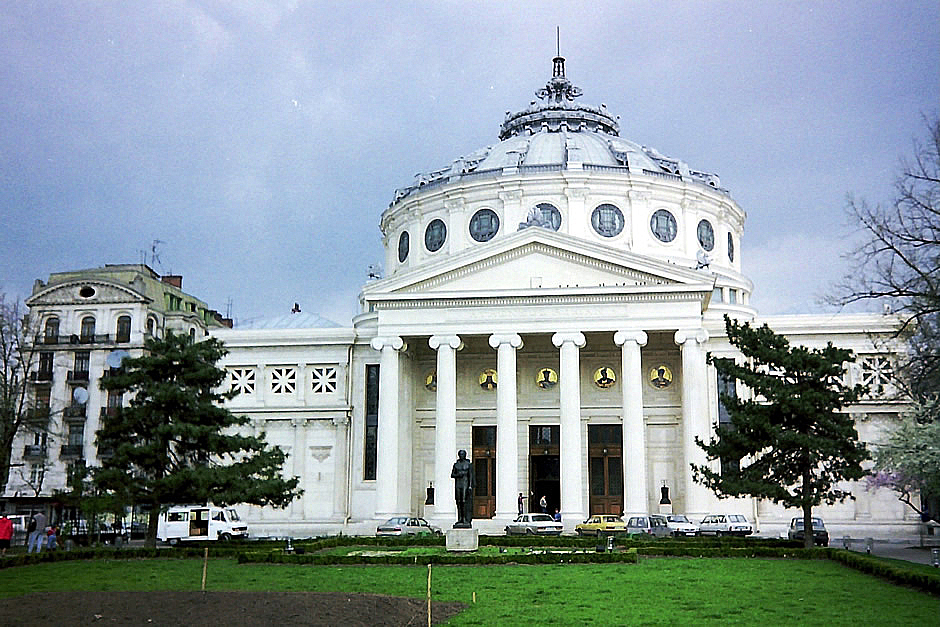
Above: Ateneul Român (Romanian Athenaeum)

Traditional entertainment
Above: One of several suburban "Gypsy Palaces"


Above: Casa Presei Libere (The House of the Free Press)


As mentioned above, Herăstrău Park in the northern part of the city houses an ethnographical museum - the 15 hectare Dimitrie Gusti National Village Museum (Muzeul Satulu). Photos from the museum are shown below. Sitting on the shores of a lake with the same name as the park, it contains rural dwellings from all over Romania, complete with their rustic furniture. The museum was built in 1936 as a result of sociological research carried out by professor Dimitrie Gusti (1880-1955). The houses are grouped according to historical regions - Moldavia, Transylvania, Banat, Oltenia, Muntenia and Dobruja. Each region has its own character as seen in the architecture, the interior decoration and furniture, whist still retaining a characteristic Romanian style. The houses give a feel to the visitor of how the inhabitants would have slept, kept warm, washed, cooked their food and interacted with people coming and going. As well as the dwellings, various other buildings for other functions may be found, including 3 wooden churches (two Transylvanian and one Moldavian). Each of the buildings, of wood, stone and clay were painstakingly taken apart and reassembled here. To the visitor, it is possible to get a flavour of the main aspects of Romanian culture and tradition, without the need to travel all over the country. It is possible to see people here dressed in 18th and 19th century costumes recreating the rural scenes of the country. Farm buildings contain all manner of agricultural artefacts, presses used by grapevine-growers to crush the grapes are on display as are wind and water mills as well - whether it is capturing the flow of the mighty Danube or the power of the wind, it is possible to see how village inhabitants adapted their life to the local conditions and each region developed its own distinct traditional identity. The museum (official web site here) offers guides, practical demonstrations by master craftsmen, traditional shows and naturally has plenty of gifts on sale.



Above: Wooden Church from Maramureș County, 1722
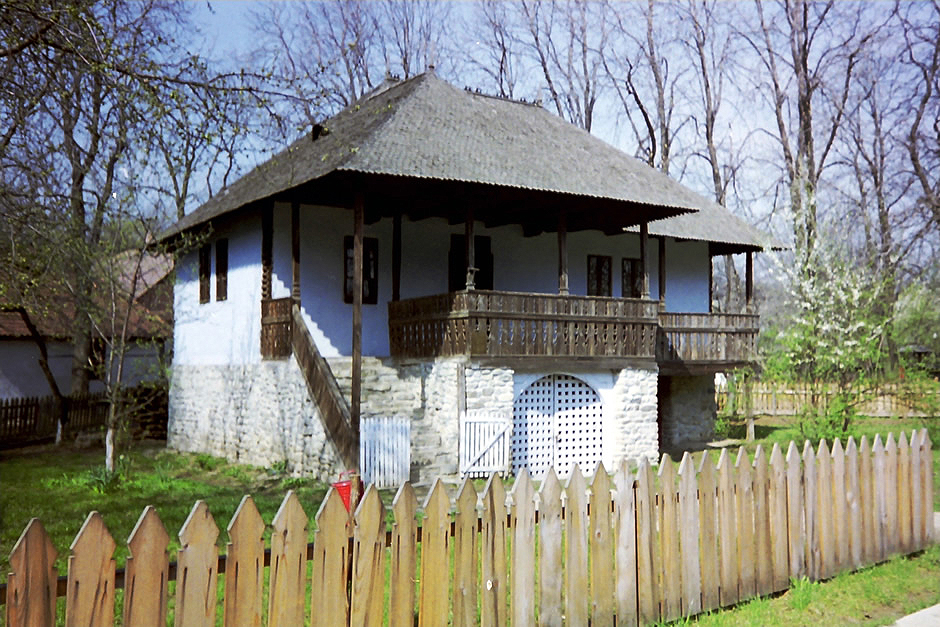
Above: 18th century household from Chiojdu Mic, Buzău County (A personal favourite).
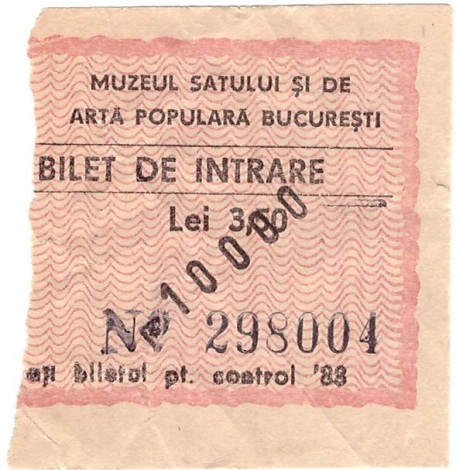
Back to Top
